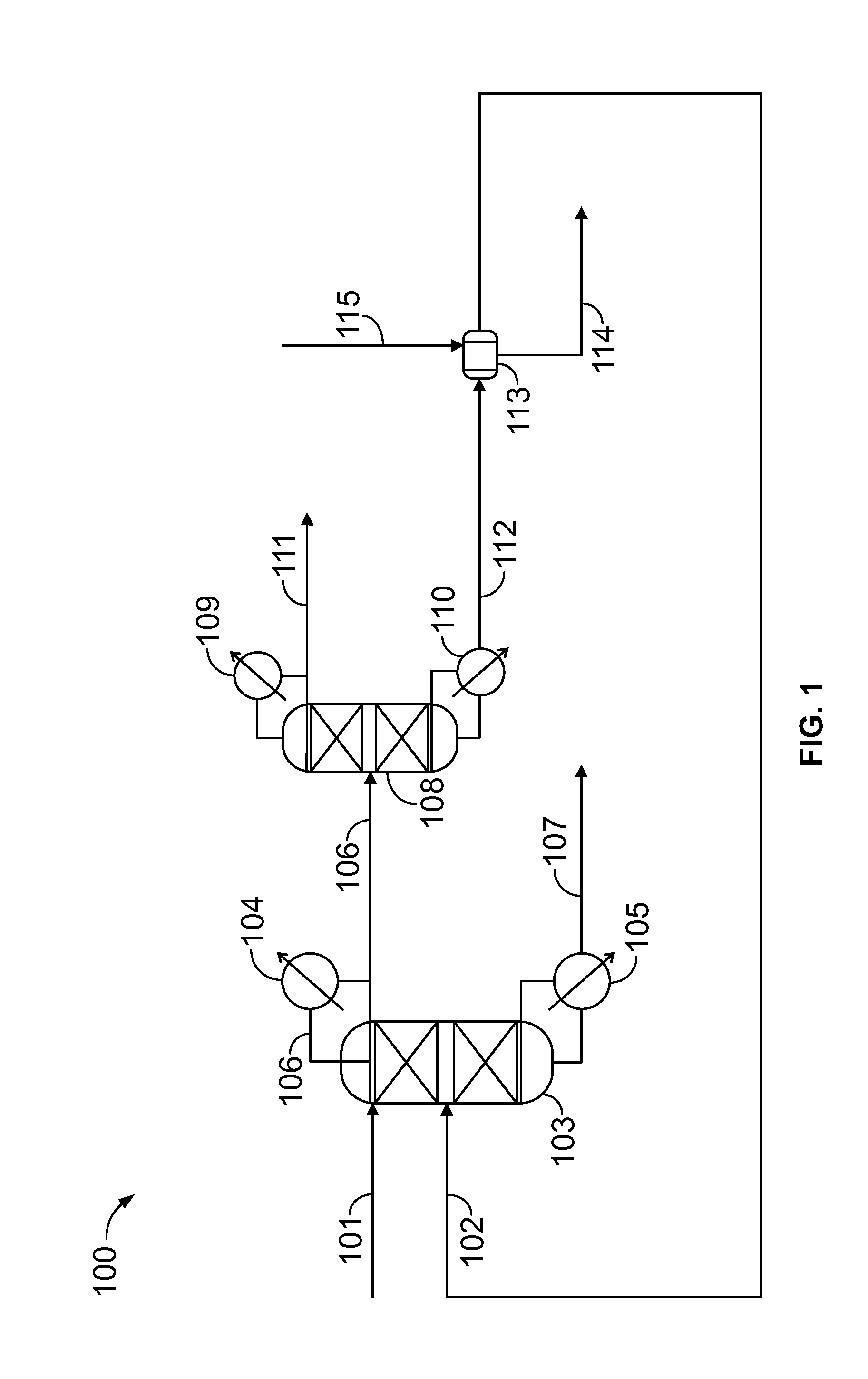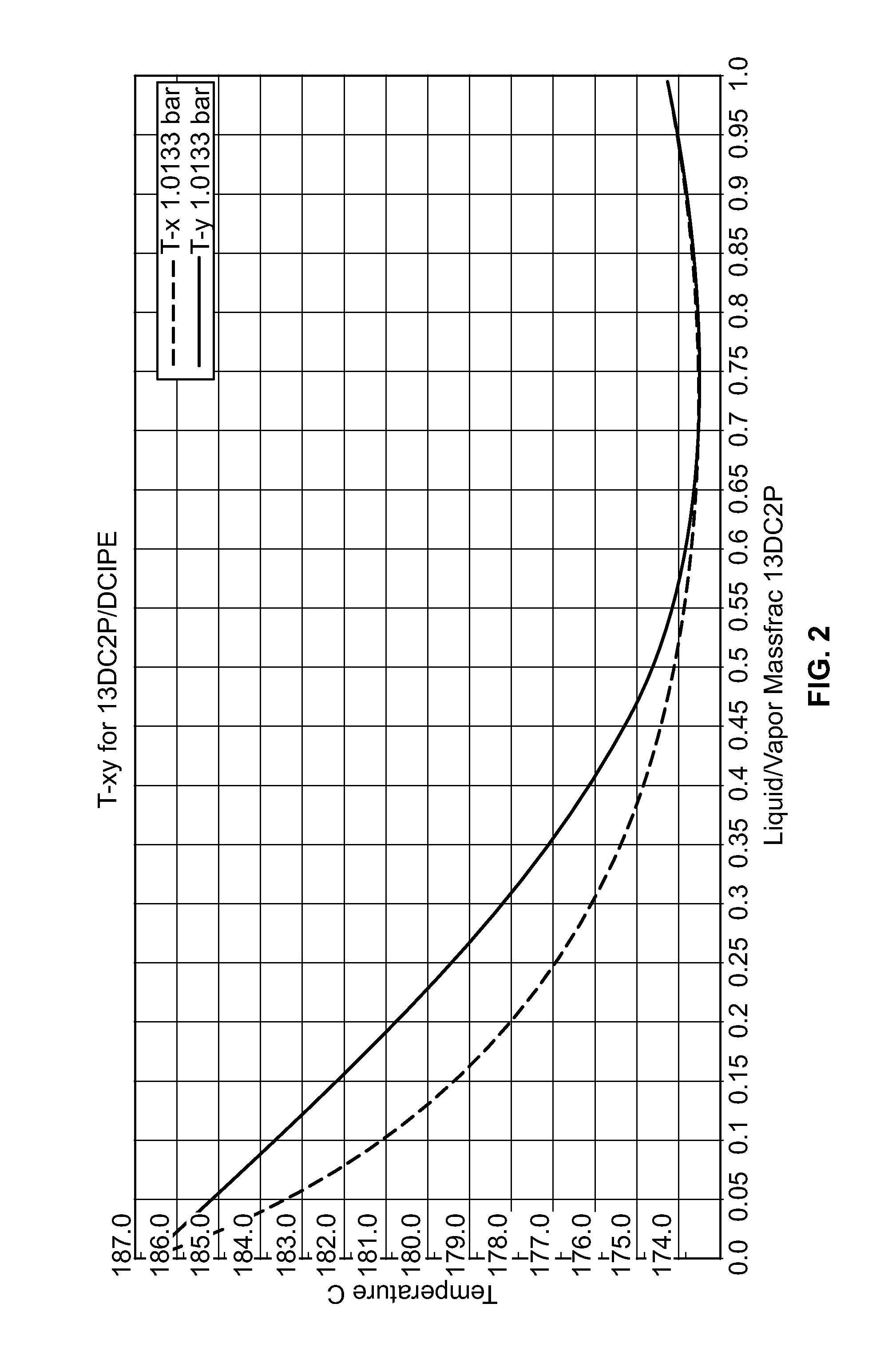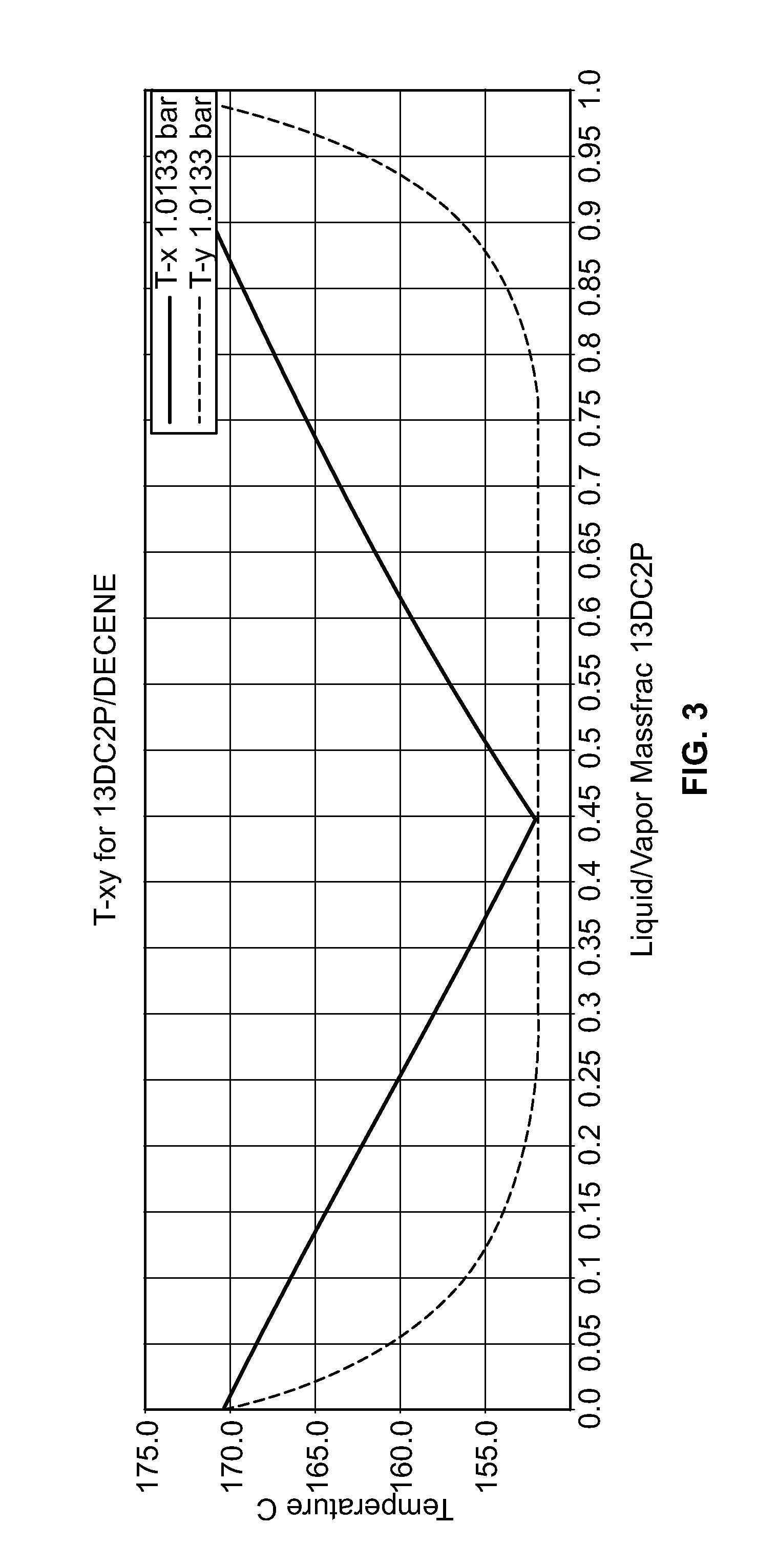Apparatus and process for using olefin as an azeotropic entrainer for isolating 1,3-dichloro-2-propanol from a 2,2'-oxybis (1-chloropropane) waste stream
- Summary
- Abstract
- Description
- Claims
- Application Information
AI Technical Summary
Benefits of technology
Problems solved by technology
Method used
Image
Examples
example 1
Preparation and Distillation Purification of DCP from the Crude PDC Bottoms without an Azeotropic Entrainer
[0032]A 1-L jacketed bottom-drain glass reactor with an overhead stirrer and nitrogen bubbler is charged with 0.8877 kg (887.7 grams) of the Crude PDC Bottoms, and cooled to 15 degrees Celsius using an attached recirculating heater / chiller. GC analysis of the feed solution finds 11.8 area percent dichloropropane, 22.8 area percent epichlorohydrin, 6.4 area percent 2-methyl-2-pentenal, 6.5 area percent (10.0 weight percent) 1,3-dichloro-2-propanol, 4.1 area percent 1,2,3-trichloropropane, and 46.0 area percent of 2,2′-oxybis(1-chloropropane). Hydrogen chloride gas (approximately 0.06 kg (60 grams)) from a lecture bottle on a balance is bubbled into the feed solution over about 3 hours. The clear solution turns yellow in color. The maximum temperature reached during the addition is 31 degrees Celsius. Gas chromatography (GC) analysis finds 11.8 area percent dichloropropane, 5.9 a...
example 2
Case I: Conceptual Scheme for Azeotropic Distillation of DCP Using 1-Decene—Process Simulation
[0036]A conceptual process flow scheme for purification of DCP from the HCl-treated PO / PG waste stream using 1-decene as an azeotropic entrainer is developed using ASPEN process simulation software version 2006.5. The Universal Functional Activity Coefficient (UNIFAC) predicted azeotropic composition of decene-DCP (47 mole percent DCP) is an equimolar ratio of decene to DCP in the final purified stream (FIG. 3), which would be a good feed composition for the reactive etherification process to produce the ether [2-chloro-1-(chloromethyl)ethoxy]-decane. Table 3 shows the composition of the feed stream following HCl treatment.
TABLE 3Design basis HCl-treated Crude PDC Bottoms stream compositionComponentWeight Percentkg / h1,2-dichloropropane5100Epichlorohydrin3602-methyl-2-pentenal71401,3-dichloro-2-propanol275402,2 ′-oxybis(1-chloropropane)5410801,2,3-trichloropropane480
[0037]Column 1 is an azeo...
example 3
Preparation and Distillation Purification of DCP from the Crude PDC Bottoms Stream with 1-Decene as an Azeotropic Entrainer
[0042]A 1-L jacketed bottom-drain glass reactor with an overhead stirrer and nitrogen bubbler is charged with 0.8453 kg (845.3 grams) of the Crude PDC Bottoms stream, and is cooled to 8 degrees Celsius using an attached recirculating heater / chiller. Hydrogen chloride gas (approximately 0.070 kg (70 grams)) from a lecture bottle on a balance is slowly bubbled in. The clear solution turns yellow in color. The maximum temperature reached during the addition is 40 degrees Celsius. GC analysis finds 12.0 area percent dichloropropane, 2.9 area percent epichlorohydrin, 6.6 area percent 2-methyl-2-pentenal, 17.6 area percent (24.4 weight percent) 1,3-dichloro-2-propanol, 4.6 area percent 1,2,3-trichloropropane, and 46.1 area percent of 2,2′-oxybis(1-chloropropane). After purging with nitrogen, the 0.8989 kg (898.9 gram) solution (mass increase of 0.0536 kg (53.6 grams))...
PUM
| Property | Measurement | Unit |
|---|---|---|
| Fraction | aaaaa | aaaaa |
| Fraction | aaaaa | aaaaa |
| Fraction | aaaaa | aaaaa |
Abstract
Description
Claims
Application Information
 Login to View More
Login to View More - R&D
- Intellectual Property
- Life Sciences
- Materials
- Tech Scout
- Unparalleled Data Quality
- Higher Quality Content
- 60% Fewer Hallucinations
Browse by: Latest US Patents, China's latest patents, Technical Efficacy Thesaurus, Application Domain, Technology Topic, Popular Technical Reports.
© 2025 PatSnap. All rights reserved.Legal|Privacy policy|Modern Slavery Act Transparency Statement|Sitemap|About US| Contact US: help@patsnap.com



